The landscape of work has undergone a significant transformation in recent years, with remote work emerging as a prevalent mode of operation. As organizations adapt to this new normal, the integration of artificial intelligence (AI) into remote work environments has played a pivotal role in reshaping…
Ferret: Refer and Ground at Any Granularity
Enabling spatial understanding in vision-language learning models remains a core research challenge. This understanding underpins two crucial capabilities: grounding and referring. Referring enables the model to accurately interpret the semantics of specific regions, while grounding involves using semantic descriptions to localize these regions. Developers have introduced…
Diablo IV’s Season Of The Construct Detailed, Kicks Off This Month
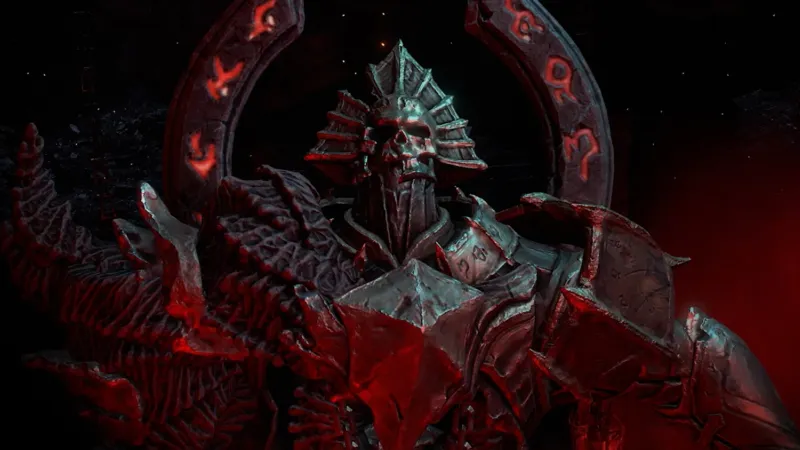
Diablo IV’s third seasonal event, Season of the Construct, has been revealed and kicks off next week. This time, players will journey beneath Kehjistan to battle demonically corrupted machines.
The story centers on the demon Malphas getting his hands on an ancient device called The Loom. Created by Zoltun Kulle for benevolent purposes, it’s able to create mechanical constructs, but Malphas has warped the Loom for his own sinister intentions to unleash a plague of evil machines. However, you’ve got your own trick up your sleeves.
Namely, Season of the Construct pairs players with their own mechanized companion called a Seneschal. In addition to lending a hand in combat, tanking incoming attacks, and healing players, the Seneschal serves as the primary power gain system for this season. It features its own management UI and can be customized with specialized Governing and Tuning Stones built to tailor your playstyle. Twelve Governing and 27 Tuning stones of varying rarities bestow a range of upgradable perks and abilities to the Seneschal to aid players in combat.
Arcane Tremors now cover the map. These areas are infested with elemental Constructs, the new seasonal enemies. Defeating them earns loot for season-specific items. Players can keep up with seasonal activities at The Gatehall, a central headquarters beneath Kehjistan featuring the standard assortment of vendors and portals accessing multiple zones of Sanctuary.
[embedded content]
Season of the Construct also introduces Vaults, a new dungeon type that features deadlier, more complex traps called Hazards. Players begin each Vault with a stackable buff called Zoltun’s Warding that diminishes as they take damage from Hazards. A chest awaits players at the end of the Vault, and the quality of the reward is based on how high you manage to keep the Warding’s buff stack once they reach it. Players can also exchange Pearls of Warding in exchange for Zoltun’s Warding at the start of Vault runs to raise the risk/reward factor.
Gauntlets are another new form of dungeon that won’t be available when Season of the Construct launches, instead arriving “soon.” These dungeons let players compete for top scores, either solo or in a group, ranked by leaderboards separated by party size. Gauntlets last for one week and are static in that they feature the same structural and enemy layout to ensure everyone faces the same challenge. When a new week begins, a new Gauntlet arrives with refreshed leaderboards.
Players can rank high on leaderboards by completing activities and challenges. The top 100 players are showcased, with the top 10 earning a permanent home in the Hall of the Ancients. High-ranking players earn medals to display on redesigned profiles.
Season of the Construct will bring quality-of-life improvements, too, such as an extra stash tab and WASD key control. Helltides will now always remain active (save a 5-minute reset break each hour), in addition to a skill tree re-spec mode, higher chances of getting powerful items from level 75, gold trading UI updates, more opportunities to earn Beast in ice summoning items, and more.
Diablo IV: Season of the Construct launches on January 23.
How to Choose the Right Video Switcher for Your House of Worship – Videoguys

The blog post “How to Choose a Video Production Switcher/Mixer that’s Right for You” by Edgar Shane, featured on JVC’s platform, sheds light on the crucial role video switchers play in live events, particularly in scenarios like church service livestreams. These devices enable the seamless capture of content from multiple camera angles, facilitating the creation of high-quality, professional-looking productions. While video switchers might seem daunting, modern options are designed with novice users in mind, making them accessible for content creators and livestreamers.
The blog post emphasizes the importance of understanding the different types of video switchers available before making a choice. It distinguishes between hardware solutions, software solutions, and hybrid options that combine both. The post showcases JVC’s KM-IP8 and KM-IP8S4 CONNECTED CAM studio switchers, which integrate with vMix software. These devices support multiple inputs, outputs, and streaming options, making them versatile tools for various applications.
Before selecting a video switcher, the post advises readers to consider factors such as the intended application (e.g., live streaming or running video displays), the user’s expertise level, the number of inputs required, and the desired video quality. The author also highlights the significance of effects and integration capabilities, such as virtual sets and graphics, which can enhance the overall production value.
The blog post introduces readers to different types of inputs like NDI, SDI, and SRT, providing an insightful overview of each. It emphasizes their relevance in modern video production and their compatibility with JVC’s offerings. The inclusion of these technical details aims to educate readers, especially those new to video production, about the key elements to consider when choosing a video switcher.
In terms of cost, the post acknowledges the budget constraints of many users, particularly in a church setting, and mentions JVC’s commitment to providing affordable options for facilities with limited budgets or smaller production teams.
Finally, the blog post guides readers on what to look for when shopping for cameras and video switchers, emphasizing the importance of HEVC and NDI/SRT support for flexibility in codec and resolution. This ensures that users can adapt their equipment to evolving production needs, allowing for future upgrades without major infrastructure changes.
In conclusion, Edgar Shane’s blog post offers a comprehensive guide on choosing the right video production switcher, combining technical insights, practical considerations, and a focus on JVC’s solutions, ultimately catering to a diverse audience in the video production space.
Read the full blog post from JVC HERE
World War 2 Horror Game Martha Is Dead Is Getting A Movie

The 2022 World War II horror game Martha is Dead is the latest video game getting a film adaptation. The game’s Italian developer LKA, is partnering with production company Studios Extraordinares to bring the psychological adventure to the big screen.
Martha is Dead is a first-person adventure that follows identical twin sisters, Guilia, the protagonist, and Martha. Set in Tuscany in 1944, during the final stretch of World War II, the sisters are fathered by a Nazi general and have a strained relationship due to the clear favoritism Martha receives from their mother. However, Martha is suddenly found dead, and their mother mistakenly believes Guilia to be Martha, forcing her to assume her late sister’s identity. Supernatural occurrences abound centering on the malevolent entity known as the White Lady.
The film follows the same premise. Studios Extraordinares is led by screenwriter/directors André Hedetoft and Andreas Troedsson, and the company’s website states it’s a “creative powerhouse writing and making high-end action, horror, and science-fiction films from original stories and extraordinary games.” The studio is also working on bringing last year’s sci-fi horror game Fort Solis to TV and film, as well as a movie adaptation of the upcoming horror shooter Veil.
We didn’t particularly enjoy what Martha is Dead had to offer as a gameplay experience. In his review, editor Wesley LeBlanc scored the experience a 6 out of 10, writing, “LKA’s love of Italy is the only warmth I felt in Martha is Dead. The rest left me feeling as cold as Giulia’s dead sister.” Given the recent success of video game films like The Super Mario Bros. Movie and Five Nights at Freddy’s, here’s hoping Martha is Dead can achieve even a fraction of that success. Or, at the very least, we hope it makes for a better movie than a video game.
Study reveals a reaction at the heart of many renewable energy technologies
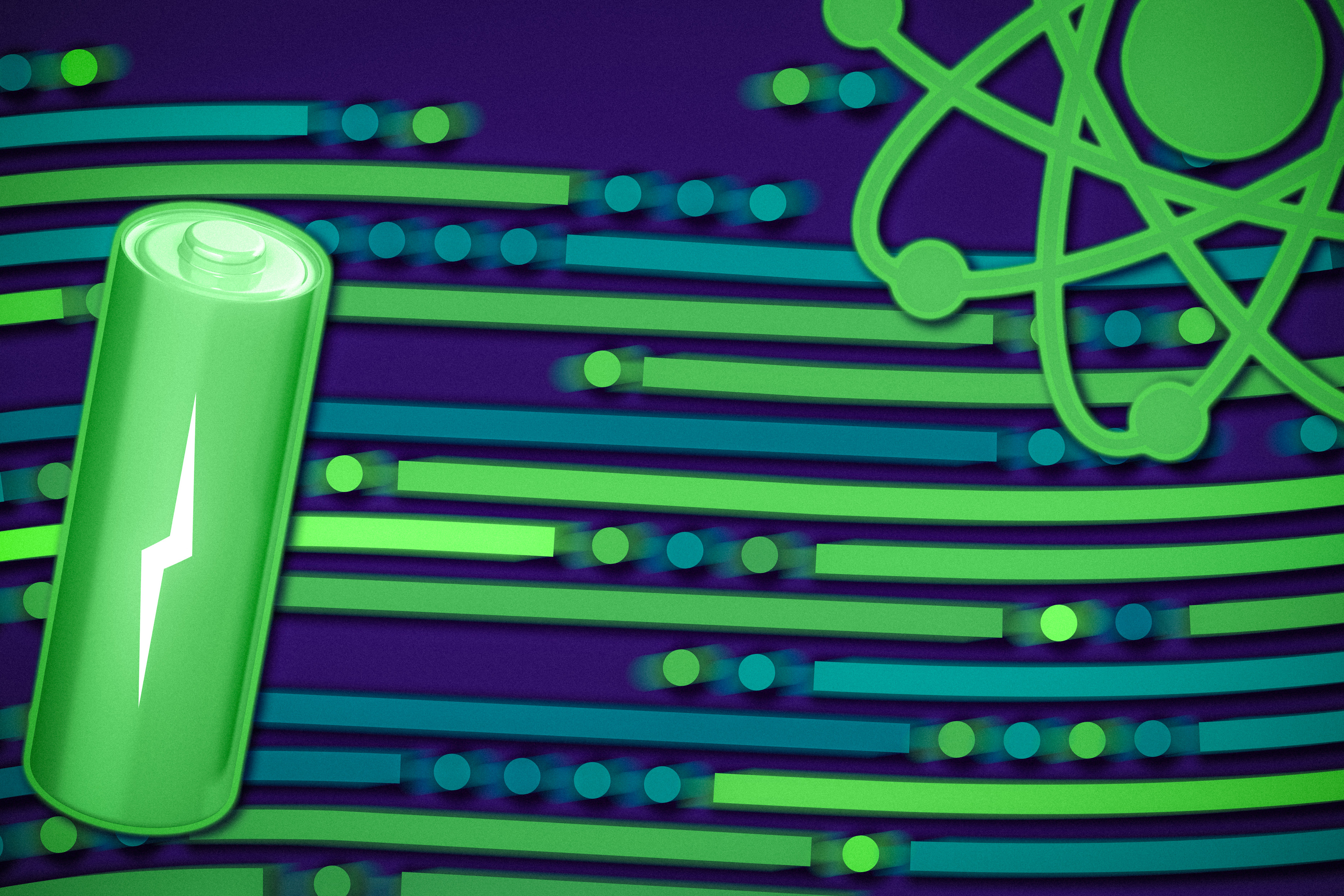
A key chemical reaction — in which the movement of protons between the surface of an electrode and an electrolyte drives an electric current — is a critical step in many energy technologies, including fuel cells and the electrolyzers used to produce hydrogen gas.
For the first time, MIT chemists have mapped out in detail how these proton-coupled electron transfers happen at an electrode surface. Their results could help researchers design more efficient fuel cells, batteries, or other energy technologies.
“Our advance in this paper was studying and understanding the nature of how these electrons and protons couple at a surface site, which is relevant for catalytic reactions that are important in the context of energy conversion devices or catalytic reactions,” says Yogesh Surendranath, a professor of chemistry and chemical engineering at MIT and the senior author of the study.
Among their findings, the researchers were able to trace exactly how changes in the pH of the electrolyte solution surrounding an electrode affect the rate of proton motion and electron flow within the electrode.
MIT graduate student Noah Lewis is the lead author of the paper, which appears today in Nature Chemistry. Ryan Bisbey, a former MIT postdoc; Karl Westendorff, an MIT graduate student; and Alexander Soudackov, a research scientist at Yale University, are also authors of the paper.
Passing protons
Proton-coupled electron transfer occurs when a molecule, often water or an acid, transfers a proton to another molecule or to an electrode surface, which stimulates the proton acceptor to also take up an electron. This kind of reaction has been harnessed for many energy applications.
“These proton-coupled electron transfer reactions are ubiquitous. They are often key steps in catalytic mechanisms, and are particularly important for energy conversion processes such as hydrogen generation or fuel cell catalysis,” Surendranath says.
In a hydrogen-generating electrolyzer, this approach is used to remove protons from water and add electrons to the protons to form hydrogen gas. In a fuel cell, electricity is generated when protons and electrons are removed from hydrogen gas and added to oxygen to form water.
Proton-coupled electron transfer is common in many other types of chemical reactions, for example, carbon dioxide reduction (the conversion of carbon dioxide into chemical fuels by adding electrons and protons). Scientists have learned a great deal about how these reactions occur when the proton acceptors are molecules, because they can precisely control the structure of each molecule and observe how electrons and protons pass between them. However, when proton-coupled electron transfer occurs at the surface of an electrode, the process is much more difficult to study because electrode surfaces are usually very heterogenous, with many different sites that a proton could potentially bind to.
To overcome that obstacle, the MIT team developed a way to design electrode surfaces that gives them much more precise control over the composition of the electrode surface. Their electrodes consist of sheets of graphene with organic, ring-containing compounds attached to the surface. At the end of each of these organic molecules is a negatively charged oxygen ion that can accept protons from the surrounding solution, which causes an electron to flow from the circuit into the graphitic surface.
“We can create an electrode that doesn’t consist of a wide diversity of sites but is a uniform array of a single type of very well-defined sites that can each bind a proton with the same affinity,” Surendranath says. “Since we have these very well-defined sites, what this allowed us to do was really unravel the kinetics of these processes.”
Using this system, the researchers were able to measure the flow of electrical current to the electrodes, which allowed them to calculate the rate of proton transfer to the oxygen ion at the surface at equilibrium — the state when the rates of proton donation to the surface and proton transfer back to solution from the surface are equal. They found that the pH of the surrounding solution has a significant effect on this rate: The highest rates occurred at the extreme ends of the pH scale — pH 0, the most acidic, and pH 14, the most basic.
To explain these results, researchers developed a model based on two possible reactions that can occur at the electrode. In the first, hydronium ions (H3O+), which are in high concentration in strongly acidic solutions, deliver protons to the surface oxygen ions, generating water. In the second, water delivers protons to the surface oxygen ions, generating hydroxide ions (OH–), which are in high concentration in strongly basic solutions.
However, the rate at pH 0 is about four times faster than the rate at pH 14, in part because hydronium gives up protons at a faster rate than water.
A reaction to reconsider
The researchers also discovered, to their surprise, that the two reactions have equal rates not at neutral pH 7, where hydronium and hydroxide concentrations are equal, but at pH 10, where the concentration of hydroxide ions is 1 million times that of hydronium. The model suggests this is because the forward reaction involving proton donation from hydronium or water contributes more to the overall rate than the backward reaction involving proton removal by water or hydroxide.
Existing models of how these reactions occur at electrode surfaces assume that the forward and backward reactions contribute equally to the overall rate, so the new findings suggest that those models may need to be reconsidered, the researchers say.
“That’s the default assumption, that the forward and reverse reactions contribute equally to the reaction rate,” Surendranath says. “Our finding is really eye-opening because it means that the assumption that people are using to analyze everything from fuel cell catalysis to hydrogen evolution may be something we need to revisit.”
The researchers are now using their experimental setup to study how adding different types of ions to the electrolyte solution surrounding the electrode may speed up or slow down the rate of proton-coupled electron flow.
“With our system, we know that our sites are constant and not affecting each other, so we can read out what the change in the solution is doing to the reaction at the surface,” Lewis says.
The research was funded by the U.S. Department of Energy Office of Basic Energy Sciences.
Foamstars Launches In February As A PlayStation Plus Monthly Game
Square Enix’s foam-drenched online shooter is going live next month and it will be a PlayStation Plus monthly game. For those subscribers looking to add it to their library, or for non-subscribers looking to purchase the game outright, Foamstars launches exclusively on PlayStation 4 and 5 on February 6.
[embedded content]
As for the game itself, Foamstars is a 4 vs. 4 online multiplayer game where players take on the role of the titular Fomastars of varying classes and abilities to participate in a game called Foamsmash. Rather than simply shooting your opponent, the goal is to coat them with enough foam so that you can slide-kick them to knock them out of the match. The foam also changes the layout of the arena by creating traversable hills and defensive walls, and you can move through your own foam faster than your opponent’s foam. The game has drawn positive comparisons to Splatoon since its reveal.
Publisher Square Enix has plans to support the game with seasonal updates for a year, including new characters, maps, and modes. The season pass for each season will cost $5.99. At launch, there will be three PvP modes. There is the standard Happy Bath Survival mode. Smash the Star encourages players to go after the opposing team’s most successful player. If you’re that player, you have the advantage of a few bonuses like more health and the ability to do more damage. And in Rubber Duck party, your team must climb aboard a giant rubber duck to advance to your team’s goal. You can check screenshots of the various maps for these modes below:
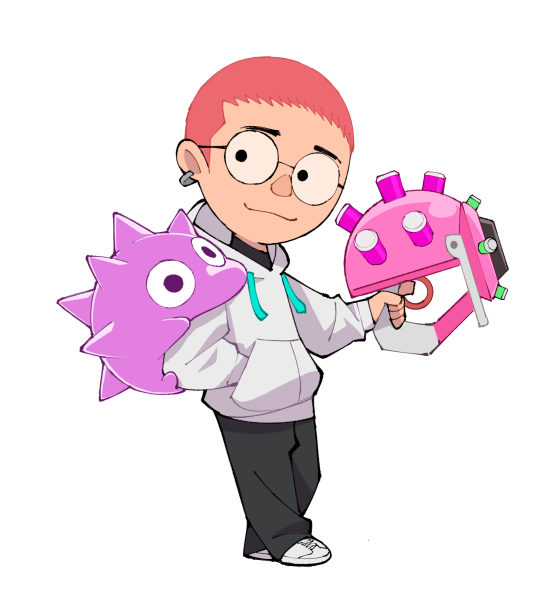
Alongside the competitive multiplayer modes, there are also single-player and co-op experiences. There is a mission mode to protect Bath Vegas (the fictional city where Foamstars takes place) from waves of “Bubble Beasties.” The Foamstar athletes will also chat and have conversations during these modes to highlight their personalities. Anytime, weekly, and season-limited challenges will also permeate all the modes.
We had a chance to speak with the development team briefly about the game and asked if we can expect any Square Enix collaborations, to which producer Kosuke Okatani (seen on the left in avatar form) said, “Nothing is confirmed yet. We are considering such things, but we would definitely like to have such collaborations. Square Enix has a cast of iconic characters, so it’s pretty exciting what could be possible in the future.” Okatani and the team shared a similar answer about potential K-pop collaborations, as the game’s art style and direction are heavily inspired by the fashion and music movement.
Foamstars will be available for PlayStation Plus monthly subscribers to add to their library between February 6 and March 4. Standalone, the game will be $29.99.
The Last Of Us Part II Remastered: Thoughts From A First-Time Player
The Last of Us Part II hit PlayStation 4 exclusively in 2020. Developer Naughty Dog brought us back into the world of cordyceps, Fireflies, Ellie, and Joel alongside new threats and characters like the WLF, Abby, Yara, Lev, and more. Game Informer gave the game a 10 out of 10 – read the review here – and I would have agreed with that score in 2020. I still agree with that score today, too.
If I wrote what I want to say about The Last of Us Part II’s story, I’m sure you’d find it very familiar because it’s largely how I felt around the game’s original release. Instead, my wife, Gabriella LeBlanc, played through The Last of Us Part II Remastered’s story for the first time ever, mostly unspoiled of the adventure, and it was awesome listening to her thoughts in real-time about the game. I wanted to share those thoughts, so I interviewed her. Below are 20 questions about The Last of Us Part II’s story with answers from someone who beat it for the first time in 2024, unaware of the leaks that happened before the game’s 2020 launch, the fates of certain characters, the ending, and more. Enjoy (and be nice to her in the comments)!
[embedded content]
Playing The Last of Us Part II For The First Time In 2024
Game Informer’s Wesley LeBlanc: What did you think The Last of Us Part II would be about going into it, unspoiled by the internet?
Gabriella LeBlanc: I honestly did not have much of an idea. I remember watching the trailer way back when the game was being released the first time, just passively because you were watching, and thinking, “Weird, what does this have to do with anything?” and that was with an already very basic idea of what the first game was even about. It seemed like some kind of culty witch-hunt vibe, which definitely sounds cool, but had no idea what it had to do with The Last of Us, so I didn’t really know what to think.
What was the biggest surprise?
LeBlanc: The biggest surprise was not Joel’s death overall, but the timing. Unfortunately, I did know that Joel was going to die because I’d seen it on Twitter or something at some point, probably a meme or something. So I knew it was going to happen. But I did not think it was going to happen so fast. When it did, I was thinking, “Okay, for real now, what is this game going to be about?”
How did Joel’s death affect you? How do you feel about its place in the game’s narrative?
LeBlanc: Mostly just disbelief because of the timing, as I mentioned. Since I’ve finished the game, I like that it happens so fast. It just provides such a shock factor that they would kill the main character, and so quickly, that it made me want to keep playing to see how this would play out for Ellie.
After Joel’s death, what did you think the game’s plot was going to be?
LeBlanc: At this point, I had a feeling that Ellie was going to go after his killer. She’s way too ruthless to let it slide, and I knew that it would eat away at her knowing the person who did this could get away.
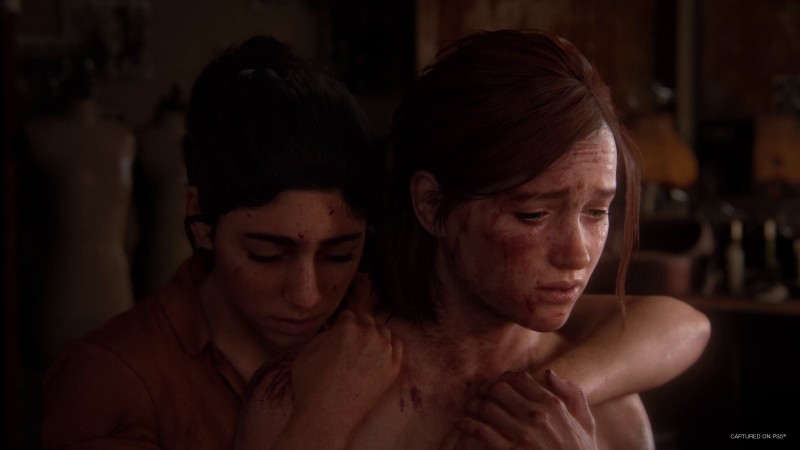
How do you feel about Ellie and Dina and their relationship in the first half of the game?
LeBlanc: When they were first interacting in the game, I thought it was maybe a little shallow, that Dina was kind of using Ellie as a rebound from her breakup with Jesse. However, as time went on, it was clear that things were more serious and they both provided something that the other person needed. I think Dina (and later the baby) gave Ellie someone to take care of, a purpose, much like Joel needed Ellie as his purpose. For Dina, Ellie served as a capable, protective person to love and share her life with. It’s unfortunate that, in the end, they both lost those things.
Shamblers are new. What’d you think of those enemies?
LeBlanc: I pretty much saw them as the same thing as Bloaters, but they were able to attack you from afar by throwing acid (I think?) spores at you, which definitely added to the panic for me. I am, unfortunately, a very panic-driven player. By that, I mean something starts to attack me, and I start to panic, then suddenly forget what every single button on the controller does. This probably just shows how amateur I am at these types of games, but these enemies definitely added to the intensity of those moments because I was terrible at predicting how and where they were going to attack me. Were they going to run at me, or throw acid bombs at me? I couldn’t predict it. Mind you, this is more of a criticism of my own skill, not the game.
Overall, I saw them as an exciting challenge. They were never so difficult to get past that it ruined the fun, but still scary and worry-inducing when I saw one!
Did you like the more open-ended area in Seattle?
LeBlanc: Yes, I actually did really enjoy this area of the game, and I say it this way because normally I am not a fan of open-world games in general. This is because I am easily overwhelmed, and my ADHD brain has a hard time figuring out what I should do next, what mission is more important, etc. But because this was at least a little bit contained and had a map to follow for guidance if you wanted it, my issues with open-world spaces didn’t really apply here. I also love crossing anything off of a list, so being able to visit a certain building and then watch Ellie cross that place off on the map was very satisfying.
I also really liked this area because I am a super-searcher when it comes to collecting items, ammo, etc. I want to scour every last corner for anything that can help me. Again, I am a very amateur player, so I want all the help I can get! So having the open world area was fun and exciting because I knew that I was going to be super stocked up on what I needed, which makes me feel a lot more confident moving forward. It was also really interesting to go into all these little shops and peer into the pre-Cordyceps world of the game and find collectibles, notes, posters, and more detailing what this place was like before the fungus took over.
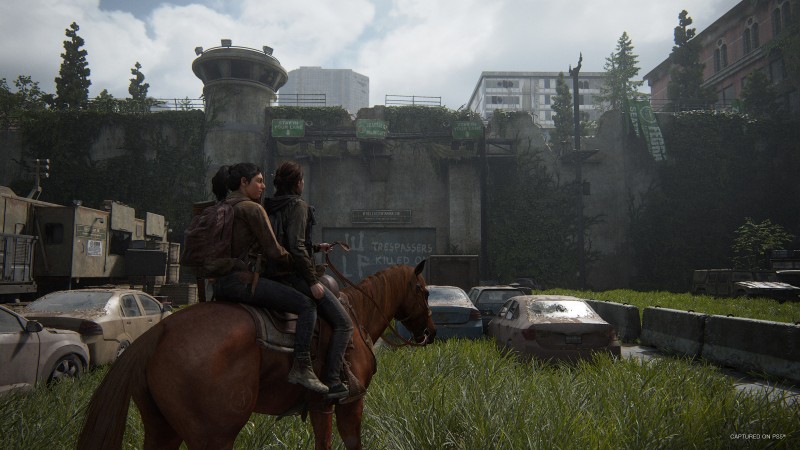
How do you feel about Ellie’s lean into violence and torture to get what she needs?
LeBlanc: I hated it…and I loved it. At first, I would be like, “Oh no, Ellie, what are you doing? Don’t do this, this isn’t you!” And then I’d flip to, “Oh my gosh, she’s doing exactly what Joel would do if he were in her position. She learned all of this from Joel,” and it only made me love watching it play out. Seeing so much of Joel’s characteristics and actions reflect back onto Ellie only made me feel for Ellie more and how big this loss really was for her. So yeah, definitely hard to watch but also endearing in a weird way.
How did you feel about Ellie making it to the aquarium – specifically, killing Alice the dog, Mel, and Owen?
LeBlanc: I mean, watching it play out from Ellie’s end, it was clear to me that she was doing what she felt like she had to do to get answers and find Abby. It was definitely rough watching it because it’s not like she is doing this to save someone she loves – she’s doing this to get revenge. I think it’s easy to watch someone do these things knowing they have someone’s life on the line that they love and are trying to save, but at this point, she’s doing this to further her mission of vengeance, so it’s hard to empathize with her actions. But, it’s clear she is starting to feel a little bit of that when she realizes after the fact that Mel was pregnant. It was tough to watch.

What did you think of the mid-game cliffhanger?
LeBlanc: Oh my gosh, I was like, “How are people expected to not just play through this game in one sitting?” I was dying to know what happened. Not only that, but I knew I was nowhere near the end of the game, so I thought, “Where in the world are we going to go from here?”
What did you think of the switch to Abby’s perspective immediately after?
LeBlanc: I was at first like, “Oh my god, you have got to be kidding me, it’s going to take me forever to get to that cliffhanger moment and find out what happens.” But once I settled in, I enjoyed playing as Abby and learning her background, as well as what the WLF really was and how their operation worked.
Whose half did you like more – Ellie or Abby?
LeBlanc: I’m scared to answer this question because it might be an unpopular opinion to go against our beloved protagonist, but I think I enjoyed playing as Abby more. Her parts of the game were more fun to play out, and she faced more challenges than Ellie did, between the Seraphites, journeying through the hotel, and the hospital scene.
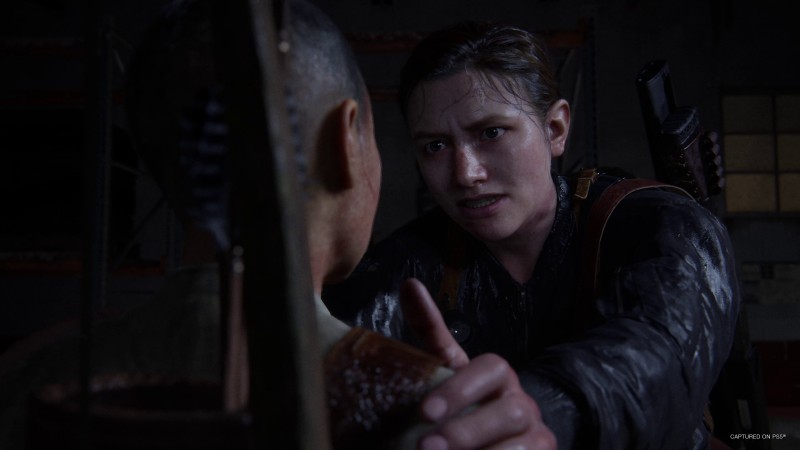
Tell me your thoughts about Abby’s journey with Lev?
LeBlanc: Well, besides having a badass little bow-and-arrow-wielding friend to sneak around and kill enemies with me so I wasn’t alone, which in itself was awesome and very helpful, their journey showed a very compassionate side of Abby. It showed that she’s a human and, in my opinion, overall, a good person. Right off the bat, it’s easy to paint these characters as good or bad at face value, but that’s part of what makes these games so good, is showing that you can be a good person and make bad decisions, and vice-versa. Abby made a bad-guy decision killing Joel, but a good-guy decision helping Yara and Lev when she really didn’t need to, especially going back to check on them.
What do you think of Lev and his story?
LeBlanc: Lev’s story is an important one, showing that these issues of judgment towards trans people don’t go away, even in the face of a major epidemic. There are literal fungus zombies walking around, and these crazy people are still more worried about whether a person is a boy or a girl. I loved that Lev ended up trusting Abby enough to really divulge what happened to him, why he shaved his head, why he and Yara ran away, and later the complicated feelings driving him to run back to his mother and the Seraphites. His journey added an interesting element to the story and showed that trans people exist and will continue to exist even in the face of major adversity, and he’s a very strong character for that.
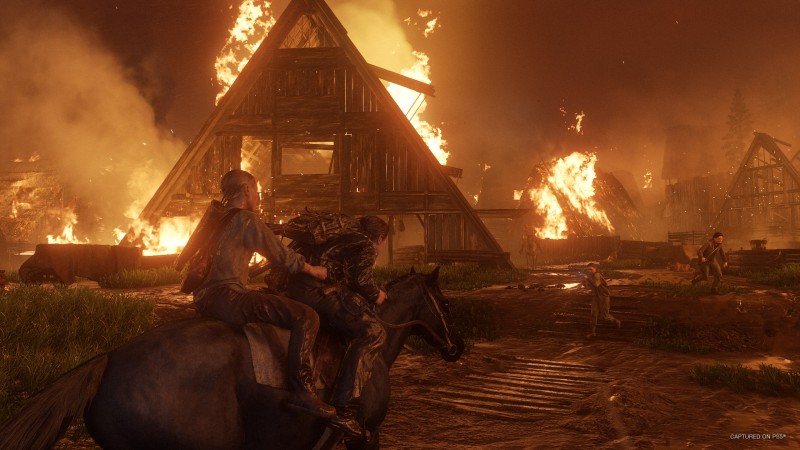
You thought the game was over when controlling Ellie at the farmhouse. How did the epilogue of the game hit you?
LeBlanc: I really did think the game was over! I was like, “Oh my gosh, I did it, this is so beautiful, wow!” And then, when Ellie makes it clear she’s going back out there to find Abby, it was so hard to keep playing because I wanted her to accept her new beautiful life so badly. She got the sheep farm that Joel had wanted. She had a beautiful family. I hated that I had to keep moving her through the story and make her leave something that was so good.
With the entire game behind you, how do you feel about the pacing of the game, especially compared to the first one?
LeBlanc: As far as pacing goes, I think overall, it was pretty well done. Both halves of Ellie and Abby’s days in Seattle were pretty even. The only thing that was a little rushed was the Rattlers storyline. That group just wasn’t really developed compared to the Fireflies, WLF, or the Seraphites. But at the same time, had it been as developed as the other groups, the ending of the game might have been a little too long, so I understand their decision to write it this way.
Tell me your thoughts about that ending!
LeBlanc: I was in absolute anguish fighting Abby. She was already barely alive when Ellie cut her down from that stake. It felt so low to keep attacking her. I love Ellie as a character, flaws and all, but I wanted her to stop so badly, to not be this person who needs revenge so desperately that she can’t see that she’s already gotten it.
Overall, what do you think of The Last of Us Part II?
LeBlanc: I absolutely loved it. I loved playing as Abby, and I loved playing as Ellie. I loved watching Ellie and Joel’s reconciliation at the end, knowing that at the time of his death, they were working on being friends again, thus ripping my heart out further. In fact, I loved having my heart ripped out. I wish I could do it again. That’s how you know it’s a good story!
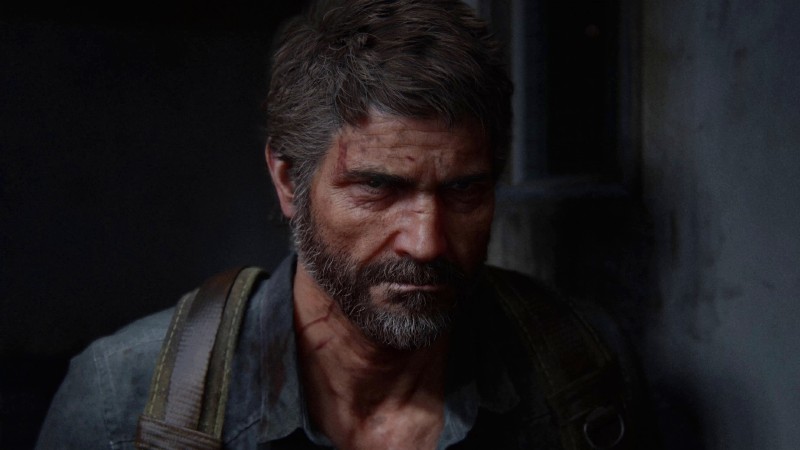
Do you want a third game? What do you envision it being?
LeBlanc: Selfishly, yes, I would love a third game simply because I genuinely enjoyed playing this game so much. But realistically, I don’t know if a third game could complement the story to make it better. The ending is so perfect the way it is, I would be scared to ruin such a good thing.
How do you think HBO will adapt Part II as a TV series?
LeBlanc: I hope HBO splits it up the exact same way the game does. I hope we have Ellie’s three days in Seattle, then Abby’s three days in Seattle, and then the aftermath. If that makes it so that Part II has to be split up into multiple seasons to tell the story effectively, then so be it – I accept that. In case anyone at HBO is out there reading this one person’s very amateur opinion, and you’re worried there isn’t an audience here for that, you’re wrong! I’m here! I’m here for it!
Anything else you want to mention that I didn’t ask about?
LeBlanc: As someone who is fairly new to these kinds of games, playing The Last of Us has made me even more excited to start playing other games like it. I used to be just an Animal Crossing and Super Mario player, and that’s pretty much where it ended. But I love reading, movies, and TV series because I love a good story, and I’m so glad that you convinced me to give these two games a shot for the sake of the story. It’s opened up a whole new world for me in the way of games, and I can’t wait to get started on playing more games like this. But I gotta say, after playing and loving TLOU Parts I and II, these other games have some very serious competition.
For more, read Game Informer’s original review of The Last of Us Part II and then check out this NGT of The Last of Us Part II Remastered’s No Return roguelite.
3 Questions: Implementing the MIT Graduate Student Union’s collective bargaining agreement

When eligible MIT graduate students voted to be represented by a union in April 2022, the decision set in motion significant changes in the graduate student ecosystem at the Institute. Moving forward, graduate students in the Graduate Student Union (GSU)’s bargaining unit — about 3,500 research assistants, teaching assistants, and instructors-G — will be represented by the GSU and covered by the terms of a collective bargaining agreement (CBA). MIT negotiated with the GSU throughout the 2022-23 academic year, ultimately reaching a CBA that was ratified by a union vote on Sept. 23, 2023. Vice Chancellor for Undergraduate and Graduate Education Ian A. Waitz, who helped lead the negotiation process, explains the nuts and bolts of the CBA, how it will be implemented, and other graduate student support measures that are underway.
Q: What are the highlights of the CBA reached between MIT and the Graduate Student Union?
A: First of all, it’s important to note that the CBA covers the terms and conditions of employment for anyone in the bargaining unit — all grad student RAs, TAs, and instructor-Gs (which are graduate students with considerable teaching experience) — whether or not they have elected to join the union and become union members. There are a number of economic provisions and benefits in the agreement, including salary increases of 5.4 percent, 3.5 percent, and 3.25 percent over the three years of the contract; an 83.3 percent subsidy of the individual dental care premium and an increased MBTA subsidy; and grants to defray expenses that certain groups of graduate students have, such as international students and students with families. The Office of Graduate Education (OGE) created a grad student benefits table that spells out further details.
We also reached agreement on non-economic provisions, such as the grievance and arbitration process and a no-strike clause. Finally, we agreed that the GSU would be an “agency shop,” which means that all RAs, TAs, and instructor-Gs are required to pay 1.44 percent of their RA, TA, or instructor-G wages to the union as a condition of their employment, whether or not they choose to be a member of the union. I provided more information about this contractual provision in an email I sent to all graduate students.
Again, these are just a few highlights. There are many other issues we agreed upon during the yearlong negotiation process, so I would encourage anyone who is interested to take a look at the Collective Bargaining Agreement [Touchstone authentication required]. As for students who are not in the bargaining unit, such as those on fellowships, we are committed to ensuring a level of equity regarding stipends and various benefits, and we want to make sure they understand all the ways they are supported. The benefits table has more information about benefits available to students on certain fellowships.
Q: What does implementation of the CBA entail, and how is it progressing?
A: Well, not surprisingly, implementation is complex. The CBA represents about 60 pages of contractual commitments that came into effect all at once. Some changes that we are making may seem relatively straightforward, like issuing bargaining unit members retroactive 5.4 percent salary increases. But even that involved 5,000 different appointments, many with unique characteristics. And for the sake of equity, MIT also raised the stipends of most students who are on fellowships, and therefore are not part of the bargaining unit, by 0.15 percent, to bring their AY [academic year]-23-24 stipend increase to 5.4 percent as well. There are several other new benefits — MBTA passes, the new dental insurance subsidy, parking — that also require new policies, procedures, and systems.
Other issues we need to address are organizationally complicated in that they involve all supervisors and administrators of graduate student employees, as well as the graduate student employees themselves. One example is how we manage graduate student appointments. Before the CBA was ratified, our system was very simple: Faculty and staff who supervise graduate students would notify their departments about the appointment and funding source. Now we need to process appointments sooner, and faculty and staff supervisors need to provide many more details about the appointment, such as hours students are required to work and the duties they are expected to perform.
Moreover, we need to efficiently document changes in a student’s appointment status, because their status may impact whether or not they are in the bargaining unit. For example, a student might be on an RA one semester, and then the next semester they might be on a fellowship, and are therefore not in the bargaining unit. This all needs to be tracked carefully and in a timely way.
Yet another change is that we are now required to formally review and act on a dozen different kinds of leaves. And students in the bargaining unit are required to formally submit requests for most types of leave. Some of these are handled centrally, some (like vacation) are handled by the individual graduate employee supervisor. Students on fellowships will continue to arrange for flexibility/time away from their academic requirements as they always have, by working with their advisor or with their department and GradSupport as appropriate for longer times away.
We will also have new requirements for formal review and approval of outside professional activities that graduate student workers may wish to pursue.
In order to address many of these new procedures, IS&T [Information Systems and Technology] and the broader MIT CBA implementation team have launched a new system comprising a student appointment portal, a supervisor portal, and an administrator portal.
In addition, those of us who supervise or work with graduate students will need to be clearer about our expectations for academic work. We’ve received a lot of questions from faculty about how the 20-hour workload for graduate students in the bargaining unit relates to academic requirements, like completing a thesis. To iron all of these issues out, the Committee on Graduate Programs (CGP) and OGE are developing policies for departments so that they can communicate their expectations. CGP and OGE will also be issuing guidance on the creation of a new graduate academic performance group, made up of students, staff, administrators, and faculty, to look at cases related to academic performance.
Needless to say, making these kinds of changes is a challenge for a decentralized institution like ours! But we are embracing it, because ultimately it will benefit all of our students and programs.
Q: Besides the CBA, what other priorities is MIT working on to support graduate students?
A: One of the priorities that we have been focusing on for the past few years is graduate student professional development. The Graduate Student Professional Development Refinement and Implementation Committee, which was an outgrowth of Task Force 2021 and Beyond, has been meeting for over a year now and is working to design a professional development requirement for MIT PhDs. The committee, which is made up of faculty, administrators, and PhD students, has visited a number of departments, student groups, and co-curricular offices to ask for input and spark conversation about professional development at the graduate level. Some of the ideas they are currently exploring are ways in which PhD students might benefit from forming a committee of professional development mentors, and also how internships might be made available as a professional development activity to interested PhDs.
In addition, Career Advising & Professional Development, in collaboration with partners, is just now unrolling two new professional development certificate programs on research mentoring and grant writing training. The Research Mentoring Training Certificate is a collaboration with the Engineering Communication Labs, and 245 PhDs and postdocs applied for this program. The Grant Writing Training Certificate Program, which is a collaboration with the Office of the Vice President for Research, was also received well, seeing 325 applications for the 100 available places. It’s exciting to see this ongoing improvement in MIT’s professional development programming taking shape.
Ultimately, our goal to enhance the life and learning experience for graduate students has remained a north star. MIT has been and remains one of the best places in the world to pursue an advanced degree in everything from philosophy to urban studies to mechanical engineering. While unionization is changing how we manage our graduate teaching and research enterprise in some fundamental ways, we are embracing it with a spirit of opportunity. We are particularly grateful for all of our campus partners, especially our graduate administrators, instructors and faculty, and other staff, who are working with us to adapt and respond to all that we need to do with such grace.
